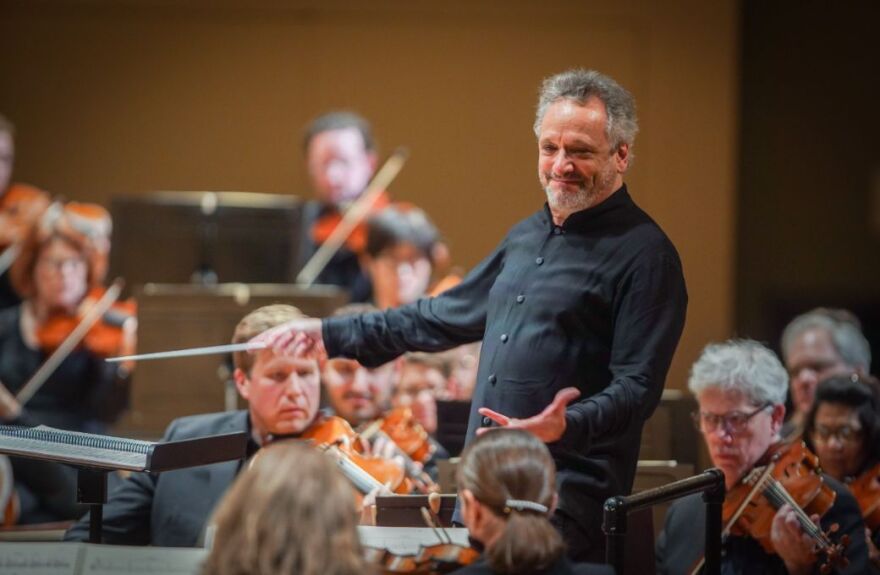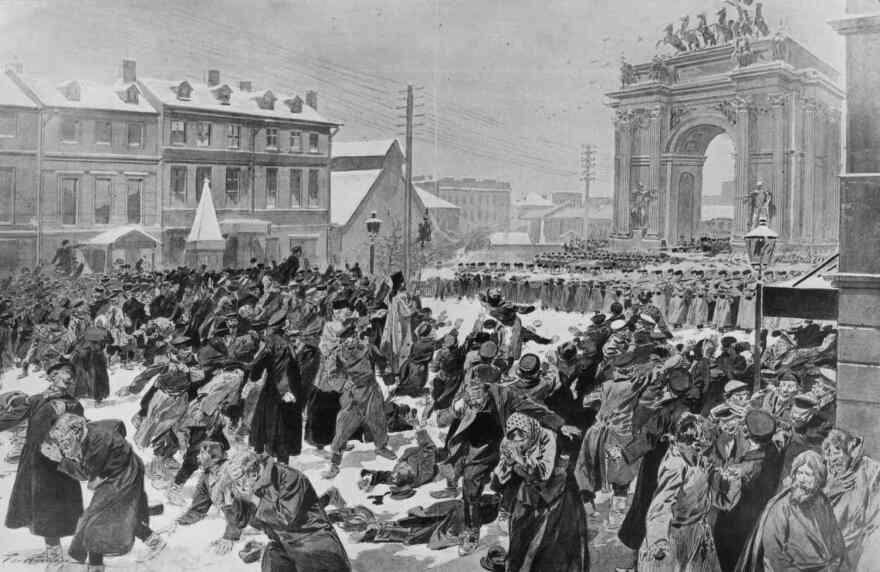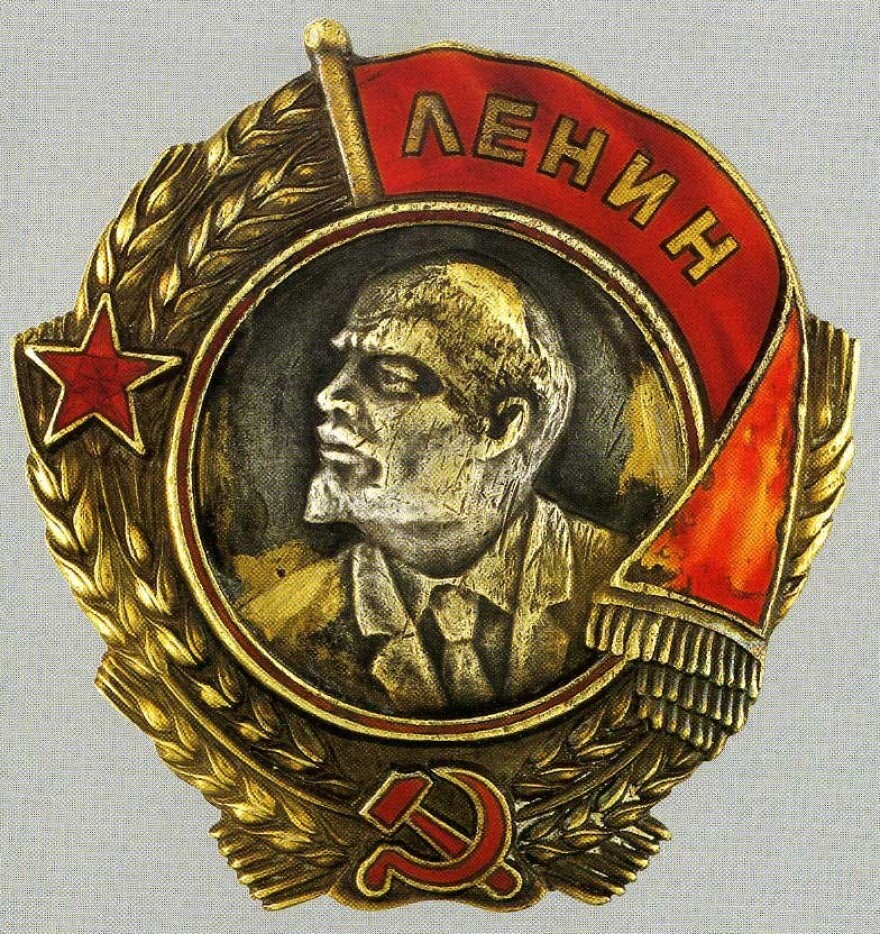What does a revolution sound like? This Sunday, the World Youth Symphony Orchestra will attempt to answer that question with Dmitri Shostakovich’s Symphony no. 11.
It is the only piece on this week’s program. Also known as "The Year 1905," the symphony was composed as a protest and reflection on the series of massacres that occurred in 1905 before the Russian Revolution and continuing during the early years of the Soviet Union.
Leading the ensemble is Louis Langrée, who is also the new music director of the Théâtre National de l'Opéra Comique.
"It's my very first time working with these young musicians, (but) not my first time in Michigan. I have conducted the Detroit Symphony several times as a guest conductor, and I even came (to Interlochen) 19 years ago with the DSO."
Having previously served as the director of the Cincinnati Symphony Orchestra for 10 years, Langrée is excited to return to Michigan and looks forward to "fun and joy making music with these talented young musicians."
You can attend the concert in person or listen to the live broadcast on Classical IPR. Classical IPR's pre-show begins at 7:00 p.m. ET, with the concert starting at 7:30 p.m. ET.
Recently, Louis Langrée visited IPR to discuss the upcoming concert at Kresge on Sunday, July 27, at 7:30 p.m. You can listen to the full interview with IPR host Christy L'Esperance by clicking "Listen" above, or read the edited transcript below:
Christy L’Esperance: It is week five of the World Youth Symphony Orchestra 2025 summer concert season at Interlochen. And these campers have given us outstanding concerts, led by world-class conductors. Leading the orchestra for this Sunday's concert is the director of Théâtre National de l'Opéra Comique, Louis Langrée. Welcome to Interlochen.
Louis Langrée: Thank you, Christy. I'm thrilled to be here.
CL: This is your first time conducting the World Youth Symphony Orchestra. Is this your first time visiting northern Michigan?

LL: So it's my very first time working with these young musicians. It's not my first time in Michigan. I have conducted the Detroit Symphony several times as a guest conductor, and I even came (to Interlochen) 19 years ago with the Detroit Symphony, but I only came for one day.
I have so many friends who have worked here or who are teaching here. Trey Devy was my previous boss in Cincinnati; he was president of the Cincinnati Symphony Orchestra and actually hired me as music director there. So he's a great friend, and a man I trust.
If Trey tells me that I should come, that I will have a lot of fun and joy making music with these young, great musicians, and that the piece I am conducting is Shostakovich Symphony No 11 — I totally trust him and I can't wait.
This symphony disoriented many people with the way it was structured. It's almost like a symphonic poem. Someone also said that it's film music without film, and I think that’s quite true. One could even say that it's a cantata without singers because most of the material is taken from revolutionary songs.
In 1957, when this piece was premiered, every single person in the hall knew it by memory, not only the music, but the words. They could follow the artistic message, but also the political message. Of course, at that time, people were not allowed to say what they thought. So the underlying message of this piece is much bigger than just a specific event, which happened in 1905.

CL: Another name for the Symphony No. 11 by Shostakovich is 'The Year 1905.' There's a story that goes along with the symphony, a hidden message. Can you tell us about those two different meanings in this symphony?
LL: It begins with a recount of Bloody Sunday, which happened on January 9, 1905. According to many historians, that event was the seed of the Russian Revolution, which happened 12 years later. People were starving, but they still trusted the Tsar. They made a huge demonstration, with hundreds of thousands of people coming to the big square in St. Petersburg. They wanted to ask for his help, and some people hoped to speak to him.
CL: And it was a peaceful demonstration.
LL: It was a very peaceful demonstration. That's why the families came with their kids. The Tsar was not there, but the army was there. Still, no one understands today why the order was given. To shoot the demonstrators. It's not very clear how many hundreds of people were shot dead.
"Why is the symphony still speaking to us? It embodies the ideal of a better world. An orchestra is the perfect metaphor of an ideal society."Conductor Louis Langrée
This was the turning point where people felt betrayed by the Tsar. And this is shown in the very first movement. It's long, super silent, at the end of the night, near dawn. In the middle of winter snow. There’s an empty square, and you can hear from a distance some trumpet calls. Some people feel that it's too long, and I agree, but I think it's fantastic. It must be too long. There is a point where you need something to happen because the silence is unbearable.
In the second movement, the crowd begs the Tsar for help, for understanding. Silence, again. And suddenly, the savage entry of the army. And they come from everywhere.
So musically, it's a fugue. Starting from the double bass, it moves to the cellos, and you hear the snare drum. This theme comes from all the parts of the orchestra. And again, silence.
And then, with guns, a terrible, horrible massacre occurs. Musicians have to play with so much bite, shortness, coldness, and a wild expression. And then again, silence with the same theme as the beginning. However, it’s a little bit different because it's not white snow. There’s red blood. Before it was in major, and now it is in minor, with this kind of shimmering image.
And then you have a beautiful theme which begins in violas, almost saying ‘you have fallen because you have given everything to your country. You have sacrificed yourself for a better life.’ It is a kind of liturgical Orthodox music. It shows that there will be hope, and citizens should do something.

The last movement is called 'Tocsin' (or alarm signal). It serves as an alarm bell, and the people stand up and win against the tyrant. But, the very last page has the theme of the massacre in the bells. Which means that in the name of the people, new massacres will occur. And thank God the censor didn't notice it, and Shostakovich won the Lenin medal for his composition!
One important detail to remember is that Shostakovich composed the symphony in 1956, one year before its premiere in 1957. During this time, the Soviet army was conducting massacres in Budapest, doing the same thing as the Tsar’s army.
There was also a Bloody Sunday in Budapest, where 600 people were shot dead because they were dreaming of freedom, peace and liberty.
Why is the symphony still speaking to us and will probably speak to us for decades and centuries? It embodies the ideal of a better world. And, what is a better way of expressing that than an orchestra, because an orchestra is the perfect metaphor of an ideal society.
Today, so many people speak 'at' each other. With music, you have to speak 'with' others. You have to listen to them, you have to respond to them. You can even object to them, but you have to listen. You have to build something together. Dialogue is what is missing today, so I'm glad that these young musicians will perform this piece while listening to each other. After that, you can express everything.
CL: Thank you so much, Louis Langrée, for taking the time to visit with us. It was an absolute pleasure and I'm looking forward to the concert.
LL: Me too. It was a great pleasure for me too, and so thank you very much for giving me the wonderful opportunity to speak about the meaning of this piece, and to speak about the relevance of this piece.










